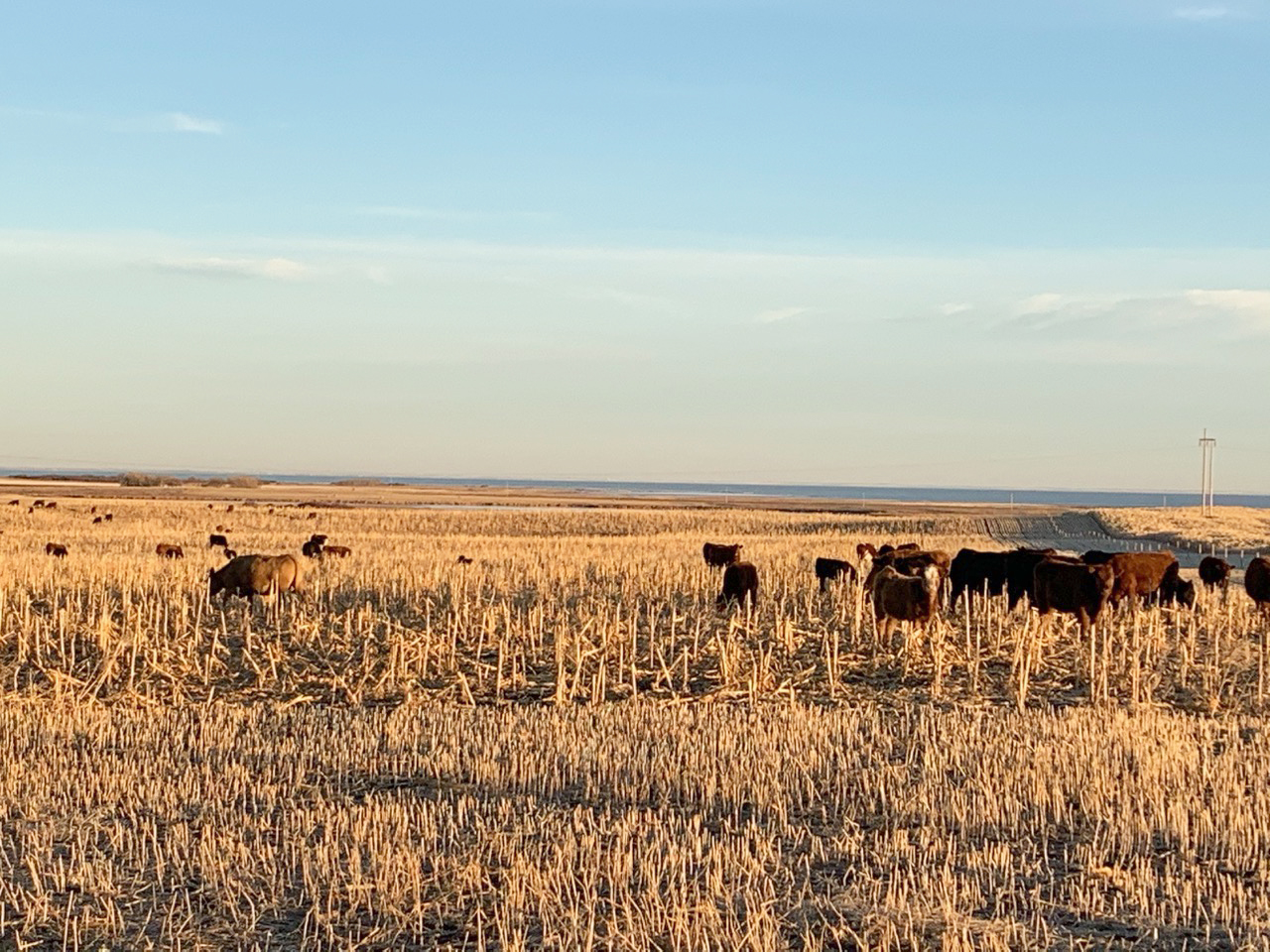Digesting the Facts on Grazing Corn

By Geoff Geddes
While we’re often told to “make hay while the sun shines,” what about making corn instead? For the cost-conscious farmer, the benefits of grazing corn offer much to chew on.
“One of the biggest advantages of corn is that it produces the most tonnes of feed out of any crop,” says Tyler Russell, Western Canadian Manager for NorthStar Genetics. “More tonnage makes more energy, which ultimately produces more beef and more milk.”
Grazing corn allows for huge tonnage, and there is also the matter of convenience when it comes to keeping your cows fed over the winter.
“With grazing corn, as long as your herd has access to water, you can turn your animals out on a small parcel of corn and they will just eat,” says Russell. “You don’t have to start your tractor every day, and you no longer need to be there feeding them on a daily basis. You can’t take that approach with other crops, like barley, wheat, or oats, as they would require swath grazing or the snow would flatten them to the ground. You end up with a lot of waste and a mess in the spring, whereas corn can easily be eaten all winter long and has excellent cleanup.”
Though convenience is always a selling point, it is cost that may really whet the appetite for corn grazing in Western Canada.
“Based on the yield in east-central Alberta this year and using a 160-acre field, we can look at the cost of feeding cows a good quality alfalfa mix at $65/bale or $0.05/lb,” says Jayden Anhorn, Alberta District Sales Manager for NorthStar Genetics. “Average feed consumption is 40 lbs/day for 150 days, which works out to $2/day per cow, $600/day for 300 cows, and $90,000 in total feed costs over that period, not including associated costs like processing or equipment.”
By contrast, grazing corn input expenses over a similar period, including fertilizer, chemistry, seed, machinery, and power unit costs, amount to approximately $250/acre.
“Multiply that $250/acre by 160 acres, and you get a total feed cost of $40,000, or $0.95/day per cow for grazing corn,” says Anhorn.
Even if math was never your favourite subject, the difference in cost is substantial. With that in mind, how do you make the most of corn grazing if you choose to go that route?
The key is to choose a hybrid designed for grazing. “Corn is either bred for grain or for silage,” says Russell. “Over 90 percent of hybrids in the market today are bred for grain, but a rancher wants a corn plant with the whole package – a tall, big plant with a large ear and long kernels that is all easily digestible. Ranchers want something bred for their cows. They want to produce as much feed as they can with the best quality so it can be easily digested and, ultimately, converted to beef. I recommend that ranchers choose a grazing (silage) specific corn hybrid for grazing.”
Because most grazing occurs from late fall to winter, farmers should seek a plant with great agronomics that stands well to avoid breakage.
“For grazing, we need plants to be whippy and soft so cows can digest them,” says Russell. “We also want plants that clean up well. We want cows to eat them right to the ground so that next year’s field is not covered in big stocks that you have to mow or otherwise tend to before planting. At the end of the day, cows eating all of a grazing corn crop will result in more energy and more gain.”
Growers should also be mindful that about half the energy or tonnage with grazing corn comes from the ear.
“Our grazing-specific lineup at NorthStar Genetics focuses on whole plant and kernel digestibility; whereas hybrids bred for grain dry down quickly and produce hard kernels,” says Russell. “NorthStar Genetics corn hybrids are bred for silage and grazing and have large, easily breakable kernels. This increases the surface area and digestibility in the cow’s rumen with minimal rumen bypass.”
In addition, “our customers are really seeing their cows clean up our more digestible plants.”
To further enhance your results with grazing corn, NorthStar Genetics uses Fortenza Maxim Quattro with Stamina as a seed treatment. “This seed treatment provides excellent protection with common spring diseases and insects of corn,” says Russell. “But its claim to fame is superior cutworm control.” In addition, Stamina supports superior plant health in cold soils, something that cool weather ranchers know all about.
Grazing corn is an economical way to feed your cows. Choose the right hybrid for your herd. Your cows will thank you for it.



